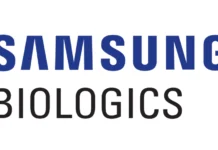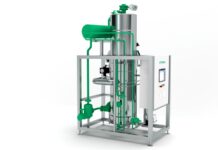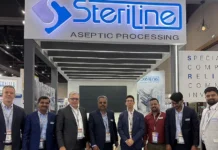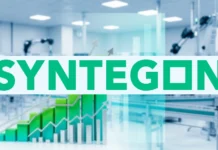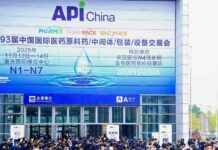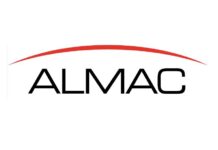Technology Transfer Models for Emerging Pharmaceutical Regions
The global pharmaceutical landscape is experiencing a fundamental transformation as technology transfer models for emerging pharmaceutical regions reshape industry dynamics and create new opportunities for sustainable healthcare solutions. Emerging markets now account for 85% of the world’s population and represent the fastest-growing segment of global pharmaceutical consumption. These “pharmerging” markets are no longer secondary considerations for pharmaceutical companies but have become primary drivers of growth, innovation, and competitive advantage in the global marketplace. The strategic importance of these regions demands sophisticated approaches to technology transfer that go beyond traditional licensing models to encompass comprehensive capability building and sustainable manufacturing ecosystems.
The shift toward regional pharma manufacturing reflects broader geopolitical and economic trends that prioritize supply chain resilience, local capacity building, and reduced dependence on centralized manufacturing hubs. Governments in major emerging markets are actively implementing policies such as India’s Production-Linked Incentive (PLI) scheme and Brazil’s Productive Development Partnerships (PDPs) to incentivize local production and ensure national health security. These policy frameworks create both opportunities and requirements for pharmaceutical companies to establish meaningful technology transfer partnerships that contribute to local healthcare infrastructure development while meeting commercial objectives.
Understanding the Emerging Market Landscape
Market Characteristics and Growth Dynamics
Emerging pharmaceutical markets exhibit unique characteristics that differentiate them from established markets in North America and Europe. These regions typically demonstrate rapid economic growth, expanding middle classes, increasing healthcare expenditure, and growing prevalence of Western lifestyle diseases. The demographic transitions occurring in countries like China, India, Brazil, and Mexico create substantial market opportunities while simultaneously presenting complex regulatory and operational challenges that require specialized approaches to technology transfer.
The concept of “pharmerging” markets encompasses more than simple geographic designation; it represents a fundamental shift in global pharmaceutical economics where emerging markets are becoming primary drivers of industry growth. Sales in BRICS and MIST countries have doubled over recent five-year periods, demonstrating the economic significance of these regions. This growth trajectory creates compelling business cases for technology transfer initiatives that can establish sustainable competitive positions in these expanding markets.
Local disease patterns and treatment preferences in emerging markets often differ significantly from those in developed countries. These differences create opportunities for targeted product development and technology transfer programs that address specific regional health needs. Understanding these local characteristics becomes essential for successful technology transfer initiatives that must balance global standardization with regional customization requirements.
Regulatory Environment Evolution
Health authorities in emerging markets are implementing increasingly sophisticated regulatory frameworks that often exceed the complexity of traditional approval processes. Many countries now require local clinical data or bridging studies to demonstrate product safety and efficacy in their specific populations. These requirements create both challenges and opportunities for technology transfer programs, as companies must develop local clinical capabilities while ensuring global regulatory compliance.
Reference regulatory pathways have become important mechanisms for accelerating product approvals in emerging markets. Countries such as Singapore, Brazil, and South Korea have implemented expedited review processes for products already approved by recognized reference agencies like the FDA or EMA. These pathways can significantly reduce approval timelines when properly integrated into technology transfer strategies, but they require careful planning and coordination to ensure eligible products meet pathway requirements.
The emergence of regional regulatory harmonization initiatives creates opportunities for more efficient technology transfer approaches. Organizations such as the Association of Southeast Asian Nations (ASEAN) are working to align regulatory requirements across member countries, potentially enabling regional registration strategies that leverage single dossier submissions for multiple markets. These developments support more efficient technology transfer models that can serve multiple markets simultaneously.
Strategic Technology Transfer Approaches
Comprehensive Capability Building Models
Modern technology transfer initiatives extend far beyond simple licensing agreements to encompass comprehensive capability building programs that develop local expertise and infrastructure. These models recognize that sustainable technology transfer requires investment in human capital, analytical capabilities, manufacturing infrastructure, and regulatory expertise. The most successful programs create self-sustaining ecosystems that can support ongoing innovation and product development activities within recipient regions.
Educational and training components represent critical elements of comprehensive technology transfer programs. Companies are investing in local investigator training, clinical site development, and regulatory capability building that create long-term strategic assets. These investments foster goodwill with local governments and healthcare communities while creating practical benefits such as expedited regulatory reviews and favorable reimbursement negotiations.
Infrastructure development initiatives focus on establishing or upgrading manufacturing facilities, quality control laboratories, and distribution networks that can support local production requirements. These investments often involve partnerships with local manufacturers who possess regional market knowledge and established distribution capabilities. The collaborative approach enables more rapid market entry while building local capabilities that support long-term sustainability.
Partnership and Collaboration Frameworks
Strategic partnerships with local manufacturers, research institutions, and government agencies create the foundation for successful technology transfer initiatives. These partnerships must balance the transfer of proprietary technologies with protection of intellectual property rights. Successful models often involve staged technology transfer processes that begin with basic manufacturing capabilities and progress toward more sophisticated activities as local expertise develops.
Government partnerships play increasingly important roles in technology transfer success, particularly in emerging markets where health authorities maintain significant influence over market access and reimbursement decisions. Collaborative programs that align with national health priorities and policy objectives create mutual benefits that support sustainable business relationships. These partnerships often involve commitments to local employment, technology development, and healthcare access improvement.
Academic partnerships provide access to research capabilities and talented personnel while supporting technology transfer objectives. Universities and research institutions in emerging markets often possess sophisticated capabilities in specific therapeutic areas or technology platforms. Collaborative relationships can accelerate technology transfer while creating opportunities for ongoing innovation and product development activities.
Regional Regulatory Compliance Strategies
Adaptive Regulatory Approaches
Successful technology transfer requires sophisticated understanding of regional regulatory requirements and expectations. Each emerging market maintains unique regulatory frameworks that reflect local priorities, capabilities, and historical development patterns. Companies must develop adaptive approaches that can accommodate these differences while maintaining global quality standards and compliance requirements.
Documentation requirements vary significantly across emerging markets, with some countries requiring extensive local language translations and others accepting English-language submissions. Understanding these requirements early in the technology transfer planning process enables more efficient preparation and submission activities. The use of specialized translation management systems and regulatory consulting services can streamline these complex requirements.
Local agent and partnership requirements in many emerging markets necessitate careful selection and management of in-country representatives. These partnerships often become critical success factors for regulatory approval and ongoing compliance activities. The selection process should consider regulatory expertise, local market knowledge, and long-term strategic alignment to ensure sustainable business relationships.
Quality Assurance and GMP Implementation
Good Manufacturing Practice implementation in emerging markets requires careful adaptation of global quality standards to local capabilities and infrastructure conditions. Technology transfer programs must ensure that local manufacturing operations can consistently meet international quality standards while accommodating local constraints related to utilities, materials availability, and workforce capabilities.
Quality control laboratory capabilities often require significant investment and development in emerging markets. The establishment of sophisticated analytical testing capabilities represents a critical component of successful technology transfer initiatives. These investments must consider both immediate product testing requirements and longer-term capabilities needed to support ongoing operations and potential product line expansions.
Supply chain qualification and management present unique challenges in emerging markets where material suppliers and service providers may lack experience with pharmaceutical GMP requirements. Technology transfer programs must include comprehensive supplier development activities that ensure reliable access to appropriate raw materials, packaging components, and specialized services required for pharmaceutical manufacturing.
Digital Technology Integration
Electronic Systems and Data Management
The integration of digital technologies into technology transfer programs creates opportunities for more efficient knowledge transfer and ongoing operational support. Electronic document management systems, video conferencing capabilities, and remote monitoring technologies enable more effective technology transfer activities while reducing travel requirements and associated costs.
Cloud-based training platforms provide scalable solutions for delivering technical training and regulatory updates to local personnel. These systems can accommodate multiple languages and learning styles while providing comprehensive tracking and assessment capabilities. The flexibility of digital training platforms supports ongoing capability development that extends beyond initial technology transfer activities.
Data integrity and cybersecurity considerations become particularly important when implementing digital systems in emerging markets. Technology transfer programs must ensure that electronic systems meet both local regulatory requirements and global data protection standards. The implementation of appropriate security measures and access controls protects proprietary information while enabling effective collaboration and knowledge sharing.
Remote Monitoring and Support Systems
Remote monitoring technologies enable ongoing technical support and quality assurance activities without requiring extensive travel or permanent expatriate assignments. These systems can monitor manufacturing operations, provide real-time technical assistance, and support troubleshooting activities from centralized technical centers. The remote support capability reduces operational costs while ensuring consistent technical standards across multiple manufacturing locations.
Virtual reality and augmented reality technologies are emerging as powerful tools for technology transfer applications. These systems can provide immersive training experiences that simulate complex manufacturing operations and quality control procedures. The visual and interactive capabilities of these technologies can accelerate learning and improve retention compared to traditional training approaches.
Artificial intelligence applications in technology transfer focus on optimizing knowledge management and decision support systems. AI-powered platforms can analyze vast amounts of technical documentation, identify relevant information for specific situations, and provide intelligent recommendations to local personnel. These capabilities become particularly valuable in emerging markets where local expertise may be limited initially.
Economic and Commercial Considerations
Investment Models and Financial Structures
Technology transfer initiatives require substantial upfront investments in infrastructure, training, and regulatory activities. Successful programs develop innovative financing models that align investment timing with revenue generation and risk mitigation. These models often involve staged investment approaches that link continued funding to achievement of specific milestones and performance metrics.
Risk-sharing arrangements between technology providers and local partners create mutual incentives for success while distributing financial exposure. These structures can include revenue-sharing agreements, milestone-based payments, and performance guarantees that align interests and motivate optimal performance from all parties. The development of appropriate risk-sharing models requires careful consideration of local market dynamics and regulatory requirements.
Government incentives and support programs in many emerging markets provide opportunities to reduce investment requirements and accelerate implementation timelines. Production-linked incentive schemes, tax holidays, and infrastructure support programs can significantly improve project economics. Understanding and leveraging these programs requires specialized knowledge of local policies and application procedures.
Market Access and Pricing Strategies
Pricing strategies for emerging markets must balance affordability considerations with commercial viability requirements. These markets often exhibit greater price sensitivity than developed markets, necessitating innovative approaches to product positioning and value demonstration. Tiered pricing models, outcome-based agreements, and volume-based discounts represent potential strategies for addressing these challenges.
Reimbursement systems in emerging markets vary widely in terms of coverage, payment mechanisms, and decision-making processes. Technology transfer programs must consider these factors when developing market access strategies and product positioning approaches. Early engagement with health technology assessment bodies and payer organizations can facilitate more favorable coverage decisions and pricing negotiations.
Distribution and logistics capabilities require careful development in emerging markets where infrastructure limitations may create challenges for product availability and cold chain maintenance. Technology transfer programs must address these requirements through partnerships with local distributors, investment in specialized storage facilities, and development of appropriate supply chain management systems.
The successful implementation of technology transfer models for emerging pharmaceutical regions requires sophisticated understanding of local market dynamics, regulatory requirements, and cultural considerations. Companies that develop comprehensive approaches encompassing capability building, regulatory compliance, and sustainable business models will establish competitive advantages in these critical growth markets. The long-term success of these initiatives depends on creating mutual value for all stakeholders while contributing to improved healthcare access and outcomes in the regions served. As emerging markets continue to evolve and mature, technology transfer models must adapt to changing requirements while maintaining focus on quality, compliance, and patient safety.





